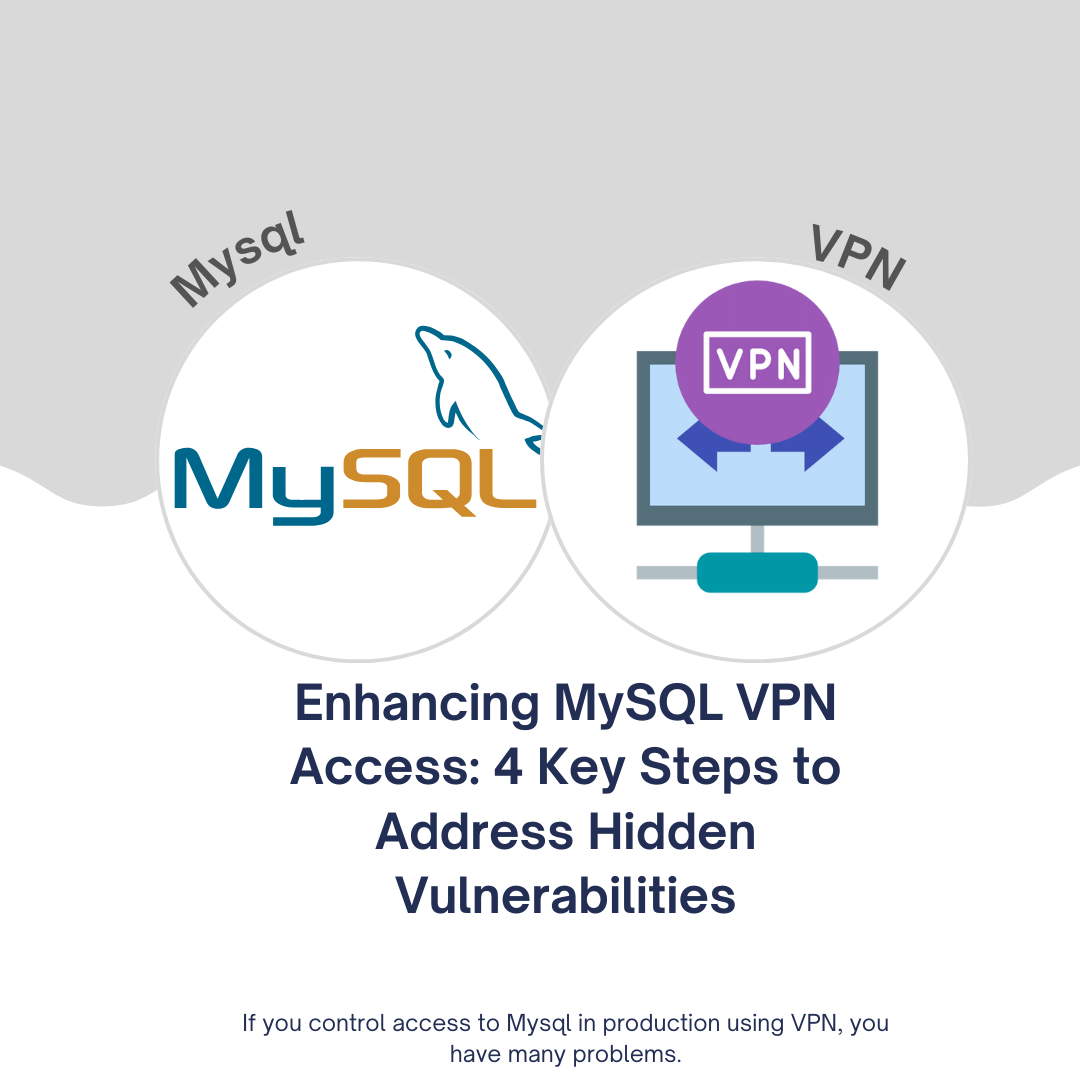Enhancing MySQL VPN Access: 4 Key Steps to Address Hidden Vulnerabilities

When it comes to controlling access to MySQL in a production environment through VPN, several challenges and vulnerabilities can arise. In this article, we will explore the five most significant problems associated with MySQL VPN access, their impacts on your organization, and practical steps to mitigate these issues effectively.
The Importance of Fast and Secure MySQL Access
Fast access to the right engineers in a production environment is crucial for maintaining product speed. It directly influences troubleshooting, bug fixes, and incident resolution, as these processes heavily rely on swift and efficient data access. Unfortunately, many teams employ inadequate solutions for granting access to MySQL, which can lead to severe security risks and hinder productivity.
Identifying the Hidden Vulnerabilities
Hidden vulnerabilities often lurk beneath the surface of MySQL VPN access management. These vulnerabilities are seldom discussed but can be exploited by attackers. Here are the four key hidden vulnerabilities:
1. Single Sign-on & Multi-Factor Authentication (MFA)
Implementing robust single sign-on (SSO) and multi-factor authentication (MFA) mechanisms is essential to ensure that only authorized personnel gain access to MySQL. These security measures help protect your database from unauthorized access.
2. Audit Trials and Personally Identifiable Information (PII) Protection
Maintaining comprehensive audit trails and safeguarding personally identifiable information (PII) is vital, especially for organizations that need to comply with regulations like GDPR, PCI, SOC2, and HIPAA. Proper audit logs and data protection mechanisms are essential to meet compliance requirements.
3. Compliance with Industry Standards
Different industries have varying requirements for MySQL access. Prioritize the access features that align with your industry's specific needs. For instance, focus on developer experience, SSO, and MFA if your industry doesn't require strict compliance. Conversely, regulated industries should prioritize security and compliance over user experience.
4. Developer Experience
Streamlining the MySQL access process for developers is crucial to maintain productivity. Evaluate how many steps developers need to take, from opening the terminal to accessing MySQL, and aim to simplify this workflow.
Fixing the Vulnerabilities: A Step-by-Step Approach
Now that we've identified the hidden vulnerabilities, let's discuss the steps to address them effectively.
Step 1: Gradual Integration of SSO and MFA
Integrate SSO and MFA into your MySQL access process incrementally. Utilize existing tools like Google OAuth to simplify the implementation. Avoid making SSO a complex project requiring numerous new tools. Start with what you can readily integrate.
Step 2: Prioritize Access Features Based on Industry
Tailor your MySQL access approach based on your industry's requirements. Focus on improving developer experience, SSO, and MFA if compliance isn't a top priority. Conversely, industries with stringent compliance demands should prioritize security measures over user experience.
Step 3: Leverage Unified Access Management Solutions
Simplify access management by consolidating various access needs, including MySQL, AWS/GCP, other databases, Kubernetes, and servers, into a single tool. This unified approach reduces complexity and enhances efficiency.
Step 4: Add Friction to Unwanted Access Methods
Discourage unwanted MySQL access methods by introducing controlled friction. For example, if engineers are using a less secure but faster approach, add a form submission step to incentivize the ideal method. Over time, you can refine and enhance the preferred method to make it the easiest and most secure option.
Conclusion
Controlling MySQL access through VPN in a production environment comes with its challenges, but addressing these hidden vulnerabilities is crucial for security and efficiency. By following the four steps outlined above, you can significantly improve the security of your MySQL access while maintaining productivity and compliance with industry standards. Remember that security and efficiency should go hand in hand when managing MySQL access in your organization.
